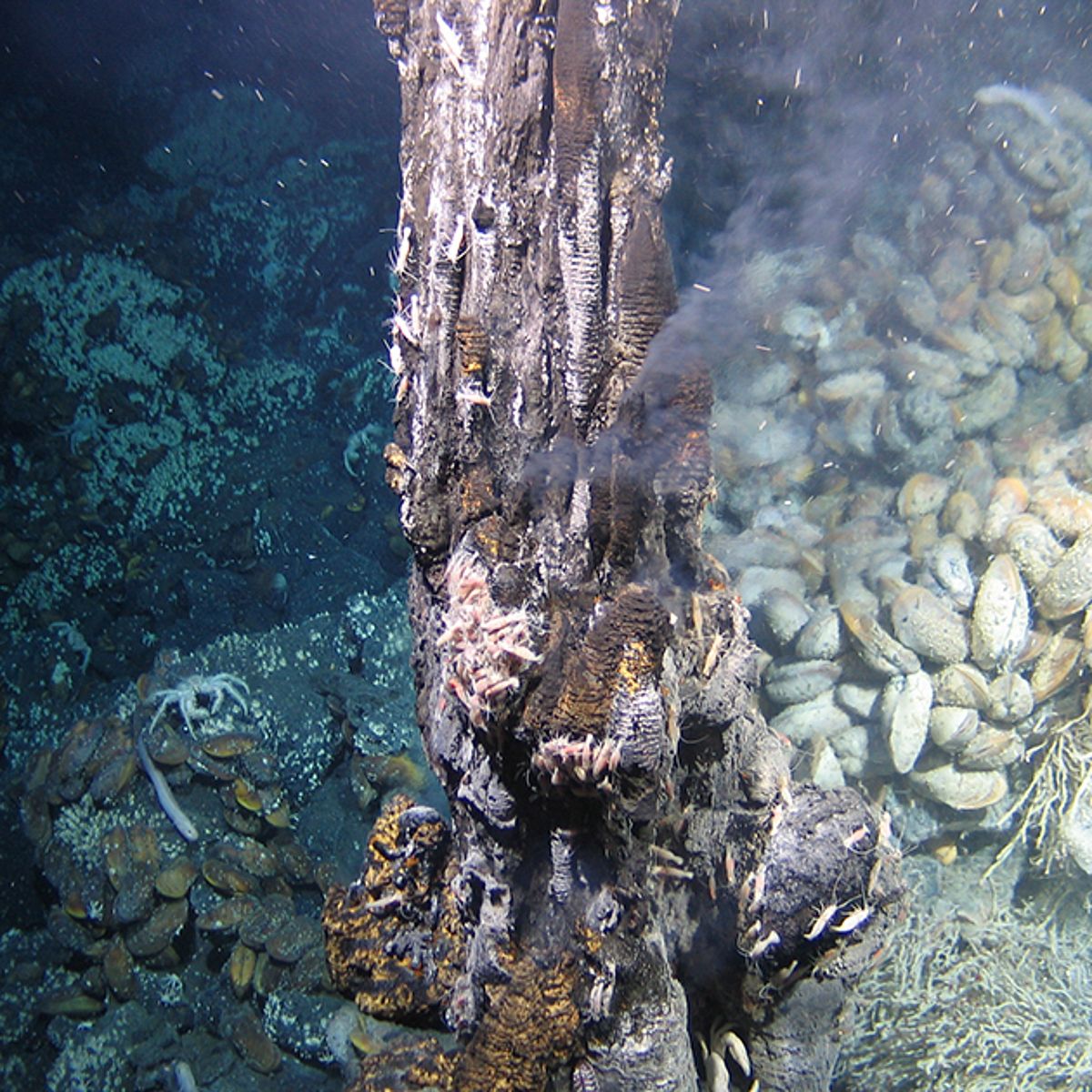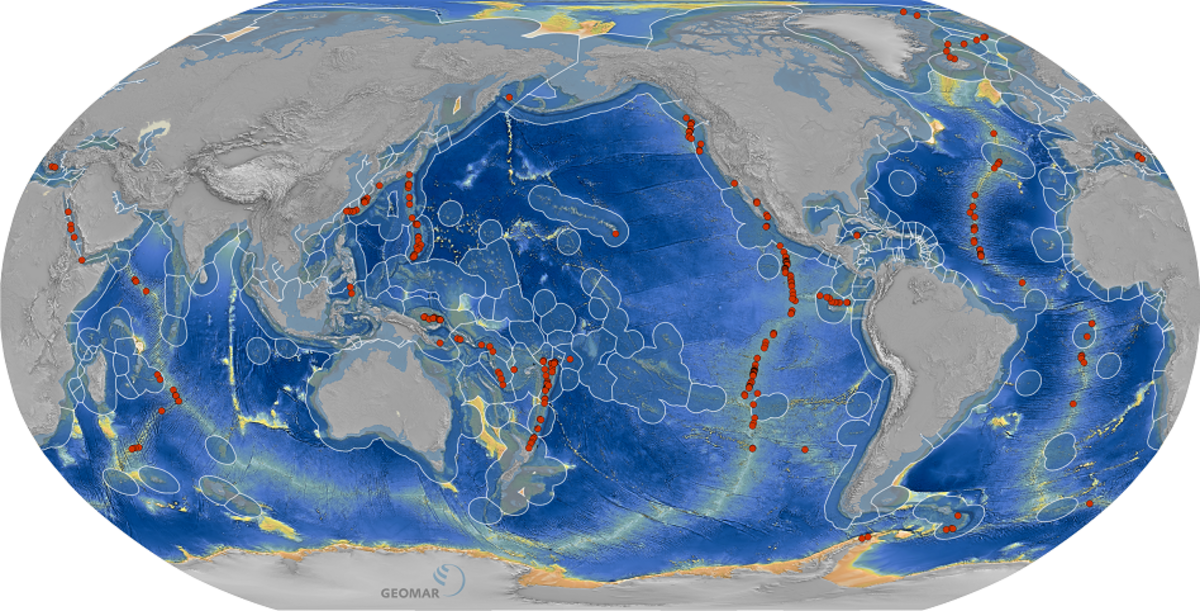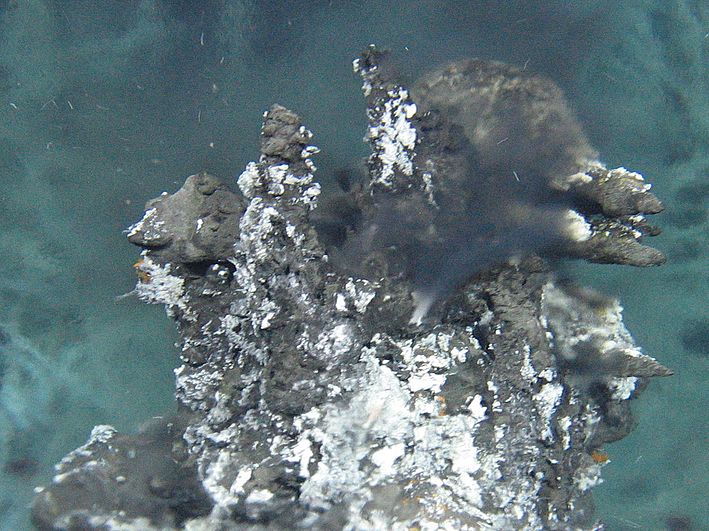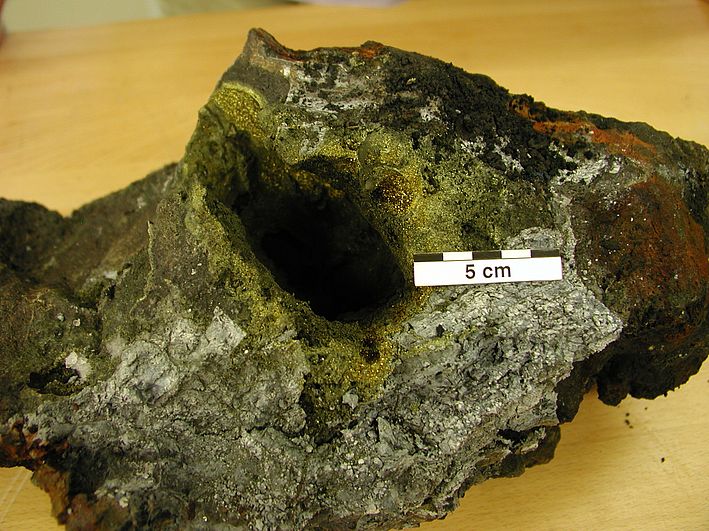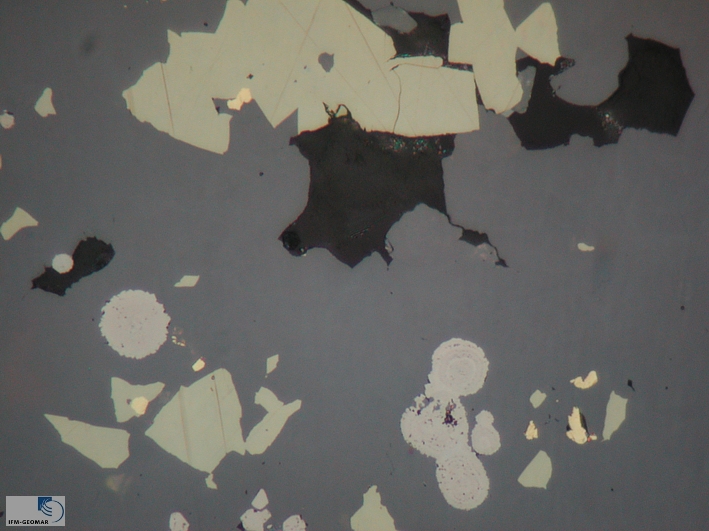The connection between volcanism and life on Earth is nowhere more evident than at the undersea spreading zones, the longest structure on our planet. By far the majority of Earth's volcanic activity occurs along these 55,000 km long ridges, where magma rises from the Earth's interior and forms new oceanic crust.
The discovery of hot springs, massive sulfides, and associated communities at 21°N on the East Pacific Ridge in 1979 clearly demonstrated that the formation of new seafloor is linked to the formation of metallic deposits and the emergence of spectacular communities. The formation of these hot springs is due to the convection of seawater through the oceanic crust. Seawater heated at depth and altered by chemical reactions emerges from the seafloor at high temperatures (up to about 400°C). The metals contained in these solutions, precipitation on contact with the cold, oxygen-rich seawater, forming the vent-like structures known as "black smokers" in reference to factory chimneys.
Since discovery in 1979, ~430 sulfide deposits (see also InterRidge database) have been found in the world's oceans, of which about 300 are currently hydrothermally active. Early investigations were limited to fast-spreading mid-ocean ridges, eg, in the eastern Pacific, where magma chambers could be detected 1 to 3 km below the seafloor. In recent years, however, a number of deposits have been found in tectonic environments where such hydrothermal systems had not been expected. In particular, these include slow-spreading mid-ocean ridges in the Atlantic, Arctic, and Indian Oceans, where rocks of the Earth's mantle are exposed on the seafloor, and shallow-marine island arc volcanoes in the western Pacific.


